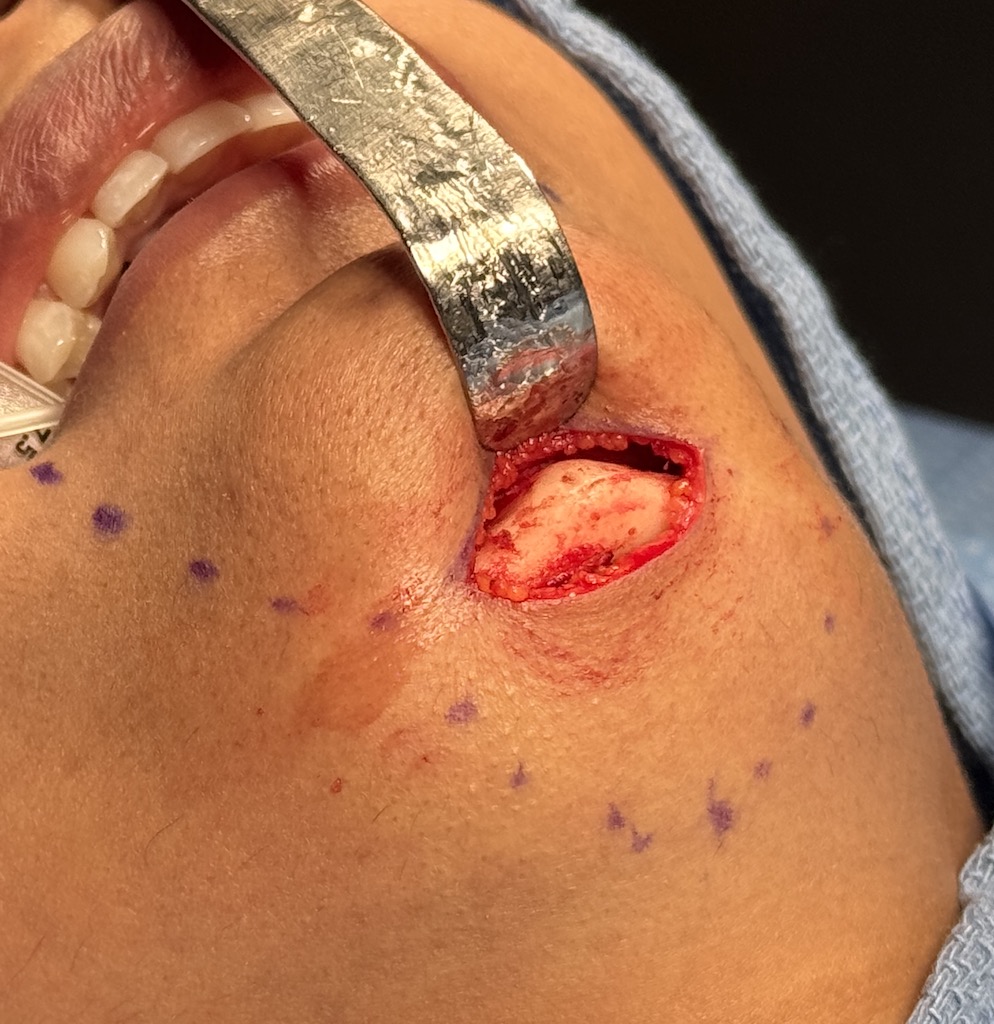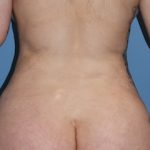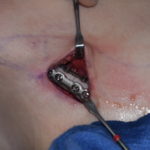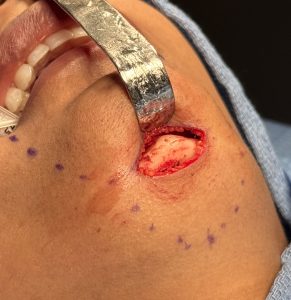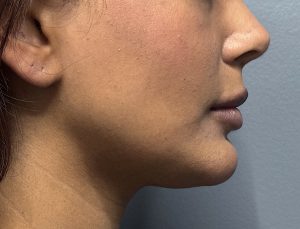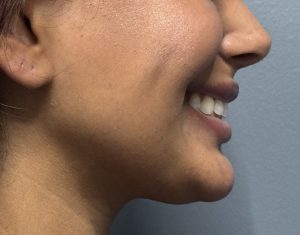Background: The excessively projecting chin is most commonly perceived as a bone problem. And while that can be true in some patients a soft tissue excess can potentially be created by bone reduction alone. This is particularly relevant when an excessive soft tissue problems exists initially.
This is most commonly seen when a stronger than desired horizontal chin protrusion exists with dynamic soft tissue chin pad ptosis. This is seen when the chin has too much projection at rest (bone problem) and the soft issue chin pad pulls down when smiling. (soft tissue problem) This is a sure setup that if only the bone its reduced the soft tissue problem will be come magnified.
The need for horizontal chin bone reduction with a soft tissue chin pad excess obviates the use of an intraoral sliding geniopalsty setback…as this does not solve the soft tissue problem. A submental approach is needed so that both bone and soft tissue excesses can be concurrently treated.
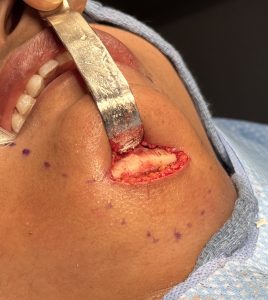
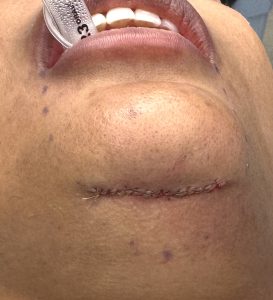
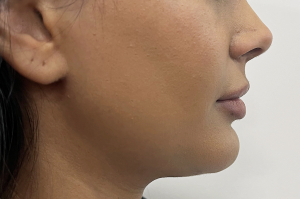
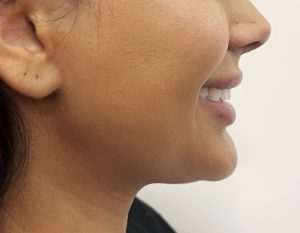
Key Points
1) An excessively projecting chin can be the result of excessive bone, soft tissue chin pad or both.
2) The excessive horizontally projecting female chin can be reduced by bone reduction but will also need soft tissue chin pad reduction as well.
3) Hyperdynamic chin pad ptosis can be resolved by chin pad excision and an inferior border tuck.
Dr. Barry Eppley
World-Renowned Plastic Surgeon

